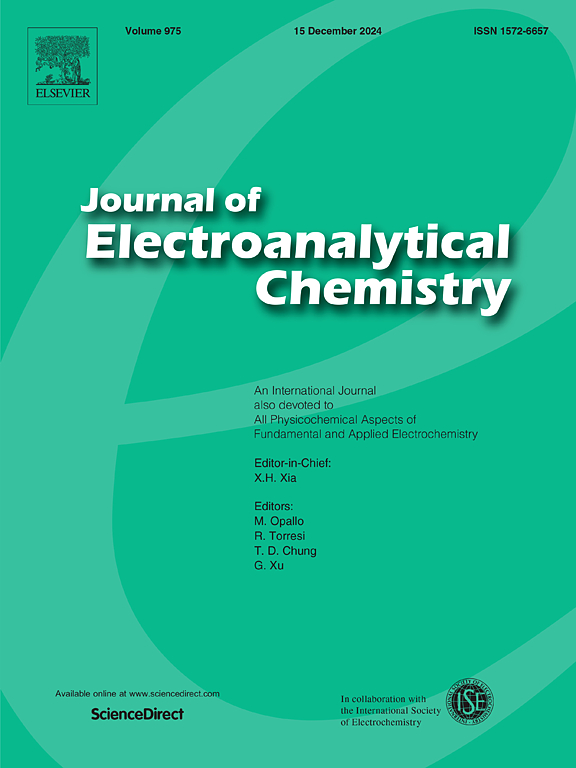高性能、长寿命锂离子电池负极用NiS/空心碳球复合材料
IF 4.1
3区 化学
Q1 CHEMISTRY, ANALYTICAL
引用次数: 0
摘要
过渡金属硫化物是很有前途的锂离子电池负极材料,但其循环稳定性和速率性能较差。本研究采用高温炭化和水热法制备了具有中空球体结构的NiS/HCS (NiS/HCS)高性能lib。这种结构结合了NiS的高比容量和碳质材料的导电性。NiS纳米颗粒均匀分布在碳球表面,增强了活性位点的可达性,而碳空心球的内腔减少了循环过程中的体积膨胀。NiS/HCS电极在0.2 A g−1时的初始比放电容量为982.9 mAh g−1,在500次循环后保持200.6 mAh g−1。电化学动力学分析表明,在1.2 mV s−1下,电容贡献增加到69%。空心碳球提高了电导率,减少了膨胀,而纳米NiS则增强了电子传递和电化学动力学。该研究为开发过渡金属硫化物基中空碳球作为高性能阳极材料提供了见解和方法,推动了下一代高效、可靠和稳定的锂离子电池的发展。本文章由计算机程序翻译,如有差异,请以英文原文为准。
NiS/hollow carbon sphere composites for high-performance and long-life Lithium-ion battery anodes
Transition metal sulfides are promising anode materials for LIBs, but are restricted by poor cycle stability and rate performance. In this study, NiS composites with a hollow sphere structure (NiS/HCS) were synthesized for high-performance LIBs using high-temperature carbonization and hydrothermal methods. This structure combines the high specific capacity of NiS and the conductivity of carbonaceous materials. NiS nanoparticles are uniformly distributed on the carbon sphere surfaces, enhancing active site accessibility, while the carbon hollow spheres' inner cavity reduces volume expansion during cycling. The NiS/HCS electrode delivered an initial specific discharge capacity of 982.9 mAh g−1 at 0.2 A g−1 and retained 200.6 mAh g−1 after 500 cycles. Electrochemical kinetic analysis showed a capacitance contribution increase to 69 % at 1.2 mV s−1. The hollow carbon sphere improves conductivity and reduces expansion, while NiS nanoparticles enhance electron transport and electrochemical kinetics. This study offers insights and methods for developing transition metal sulfide-based hollow carbon spheres as high performance anode materials, advancing next-generation LIBs with better efficiency, reliability, and stability.
求助全文
通过发布文献求助,成功后即可免费获取论文全文。
去求助
来源期刊
CiteScore
7.80
自引率
6.70%
发文量
912
审稿时长
2.4 months
期刊介绍:
The Journal of Electroanalytical Chemistry is the foremost international journal devoted to the interdisciplinary subject of electrochemistry in all its aspects, theoretical as well as applied.
Electrochemistry is a wide ranging area that is in a state of continuous evolution. Rather than compiling a long list of topics covered by the Journal, the editors would like to draw particular attention to the key issues of novelty, topicality and quality. Papers should present new and interesting electrochemical science in a way that is accessible to the reader. The presentation and discussion should be at a level that is consistent with the international status of the Journal. Reports describing the application of well-established techniques to problems that are essentially technical will not be accepted. Similarly, papers that report observations but fail to provide adequate interpretation will be rejected by the Editors. Papers dealing with technical electrochemistry should be submitted to other specialist journals unless the authors can show that their work provides substantially new insights into electrochemical processes.

 求助内容:
求助内容: 应助结果提醒方式:
应助结果提醒方式:


